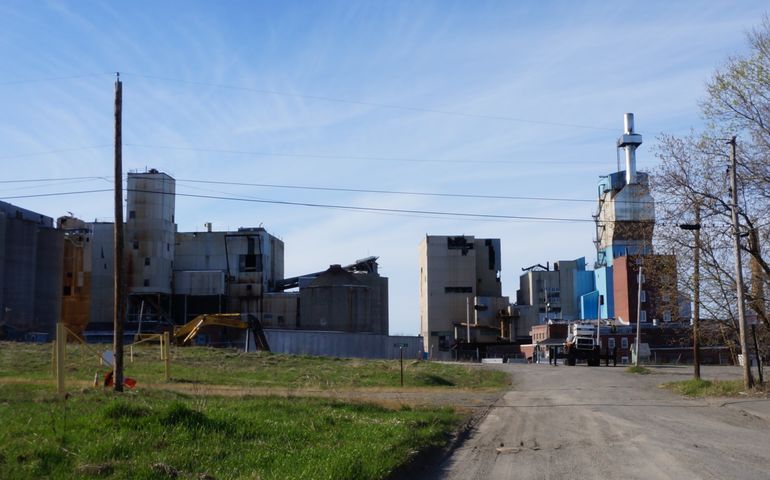So add this to list of green products, This product can be used for heating oil, most likely blended with Biodiesel. Biodiesel is great stuff except that its pour point is high. Therefor not so good in cold climate. Ethyl levulinate can be blended in and drop the pour point. It can be made with low grade wood products. With the closure of many Maine papermills and biomass power plants, low grade wood is being left in the woods as it costs more to haul it than they can sell it for. I wonder what the Cetane rating is and if it can be used in Diesels?
The proposed plant location was a pulp an paper mill that shut down after they accidentally blew up their chemical recovery boiler after years of "band aid" patches. The plant is basically a future superfund site so if it could be reused it will save an expensive clean up and creaty some jobs in a rural area of Maine.

 www.mainebiz.biz
www.mainebiz.biz
Unfortunately this is the not the first proposal for the site, there was a prior company that was going to build a cross laminated timber factory there. Most of these proposals sound great but usually its developer pushing them who need a big infusion of state cash and loan guarantees to make it real. Usually it comes down to that yes the product can be made but its considerably more expensive than dyno diesel. It doesnt make economic sense unless emodied carbon is factored in an to date there is not a universally recognized carbon taxing scheme. Still nice to know that is drop in replacement so folks dependent on heating oil for home heating with little hope of natural gas have an option.
If they pull it off there are several other locations in Maine NH and VT where there is lots of low grade wood readily available cheap.
The proposed plant location was a pulp an paper mill that shut down after they accidentally blew up their chemical recovery boiler after years of "band aid" patches. The plant is basically a future superfund site so if it could be reused it will save an expensive clean up and creaty some jobs in a rural area of Maine.

Bangor developer aims to bring biorefinery, jobs to former Lincoln mill site
A biofuel called ethyl levulinate can be made from wood residue, waste paper or cardboard, municipal solid waste and food waste. The proposed biorefinery would produce locally sourced, renewable, carbon-neutral heating fuel.
Unfortunately this is the not the first proposal for the site, there was a prior company that was going to build a cross laminated timber factory there. Most of these proposals sound great but usually its developer pushing them who need a big infusion of state cash and loan guarantees to make it real. Usually it comes down to that yes the product can be made but its considerably more expensive than dyno diesel. It doesnt make economic sense unless emodied carbon is factored in an to date there is not a universally recognized carbon taxing scheme. Still nice to know that is drop in replacement so folks dependent on heating oil for home heating with little hope of natural gas have an option.
If they pull it off there are several other locations in Maine NH and VT where there is lots of low grade wood readily available cheap.

